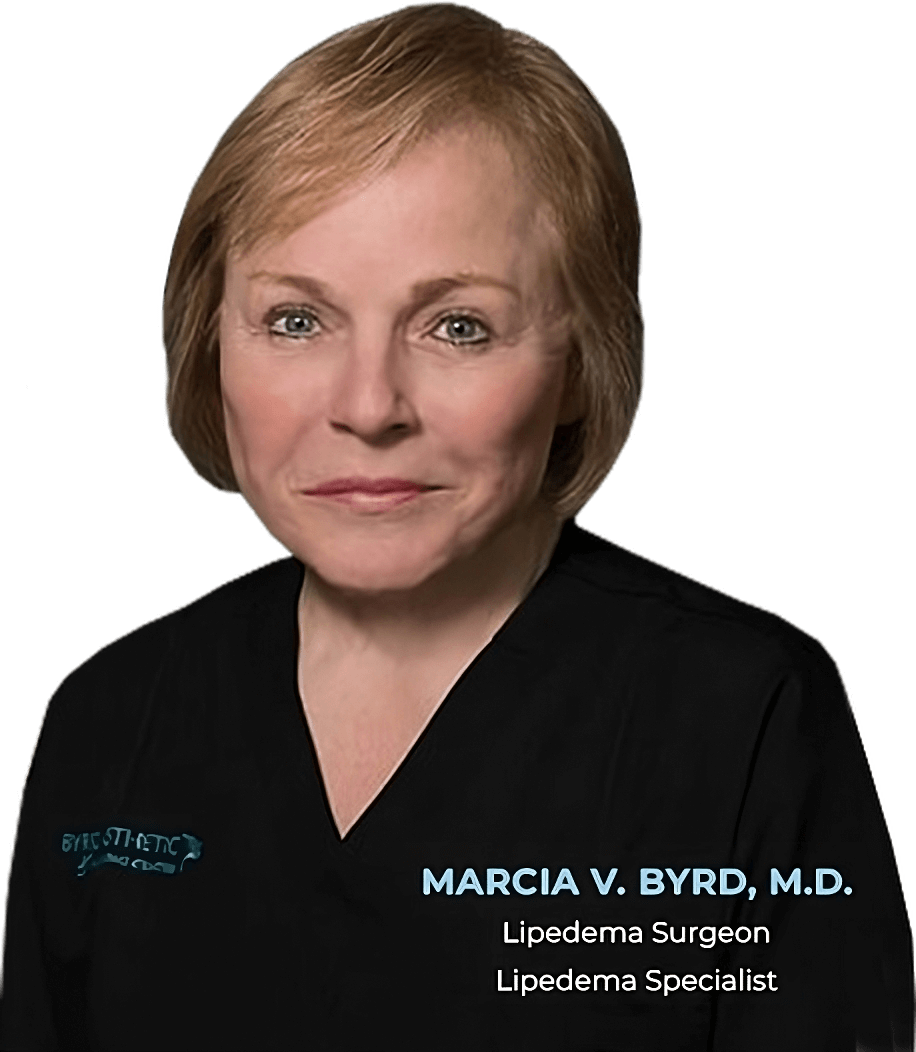Welcome to
Lipedema Surgery Center
Lipedema Surgery Center was founded by Marcia V. Byrd M.D. , who has over 30 years of experience in lipedema liposuction techniques including lymph-sparing WAL (Water-Assisted Liposuction) and PAL (Power-Assisted Liposuction) techniques.
Dr. Byrd has performed thousands of Lipedema liposuction surgeries and has trained with Dr. Josef Stutz of Germany, the world renown authority on Lipedema liposuction.
You will find that Dr. Byrd and all of her staff are caring individuals who are truly dedicated to treating patients who have this disorder, by giving them hope, and alleviating their pain emotionally and physically.
schedule a consultation


